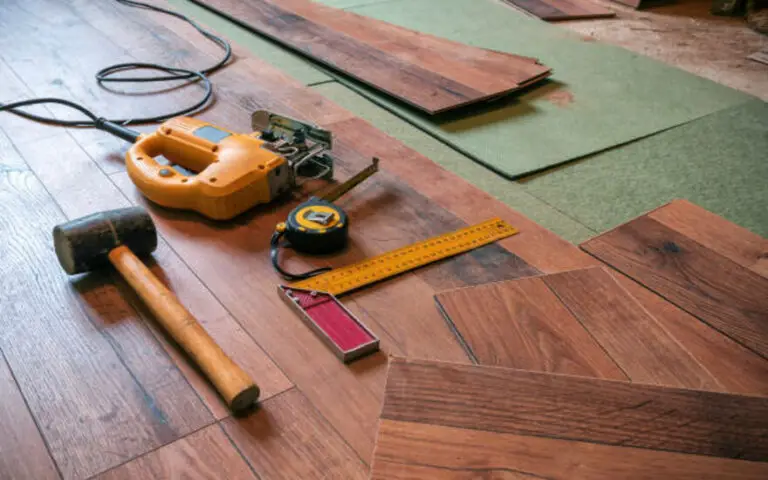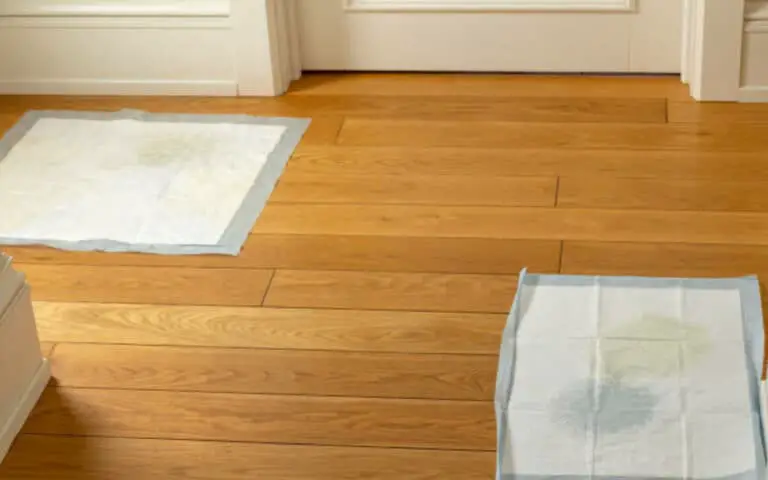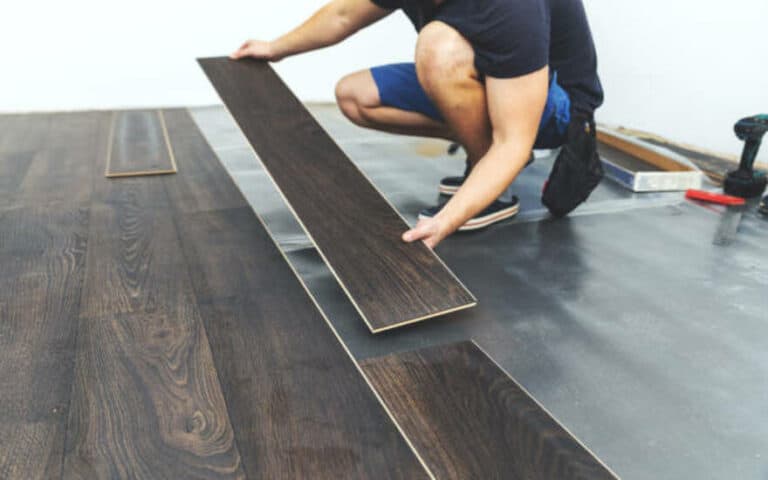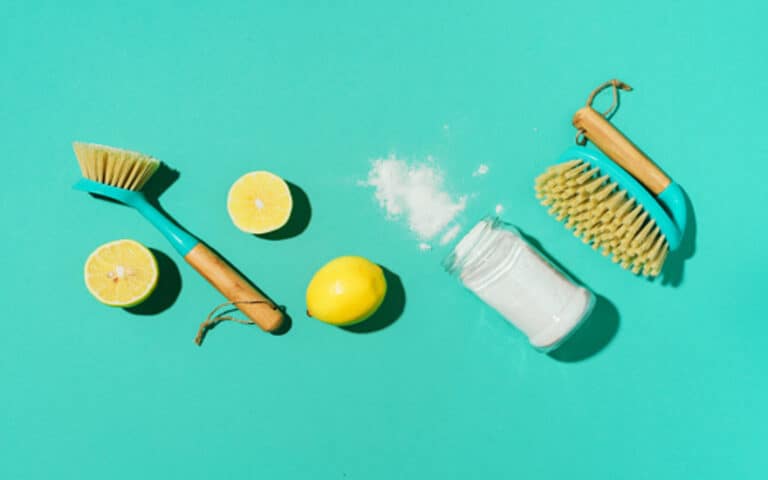Are you dealing with a dirty bathroom floor and don’t know where to start? Don’t worry; I have the answers you need! This blog post will share some of the best methods for cleaning a dirty bathroom floor so that it looks as good as new. Read on to learn more!
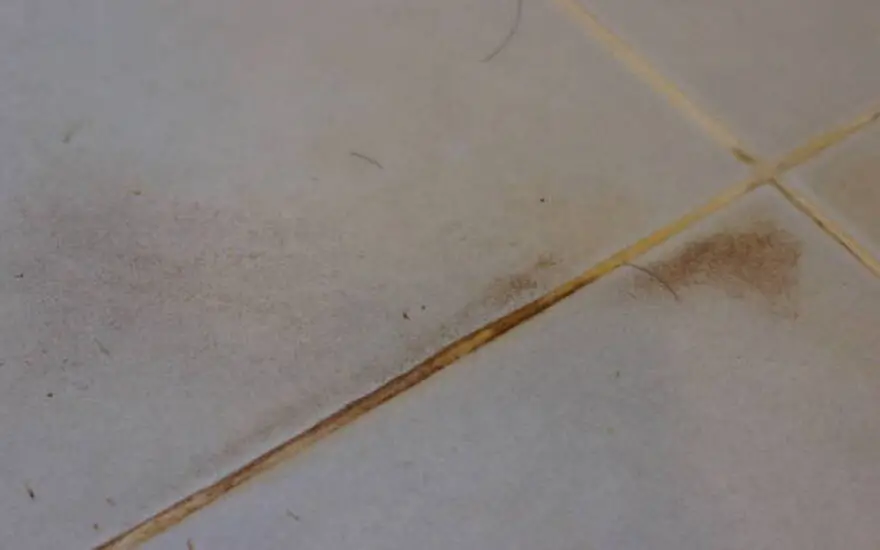
11 Proper ways to clean a dirty bathroom floor:
When it comes to cleaning a dirty bathroom floor, then there are many ways to do it. Here are the steps:
1. Gather Supplies
When cleaning a dirty bathroom floor, the first step is ensuring you have all the necessary materials and supplies. Start by stocking up on cleaning products you might need, such as Lysol and Dawn, which are highly effective at removing grime and grease.
2. Test a Cleaning Product
When cleaning a dirty bathroom floor, you need the right supplies and the correct method. Before you start scrubbing, it’s essential to test a cleaning product to make sure it won’t cause any damage to the Floor.
To do this, mix a small amount of the cleaner with water and apply it to an inconspicuous area of the foot. Let it sit for a few minutes, then brush it off with a damp cloth. If the Floor looks the same, you can use the product to clean the rest of your bathroom.
3. Scrub the slimy bathroom floor with a Brush
Once you include all the required supplies, it’s time to start scrubbing the dirty bathroom floor. Depending on the surface, you may use a brush with stiff bristles or a broom with a scrubbing pad. If the Floor is particularly slimy, use an encounter with a handle to get into tight corners and hard-to-reach areas.
To ensure you don’t get all the spots, work in sections, starting at the far end of the room and working your way toward the door. Apply enough pressure to remove dirt and grime, but not so much that you damage the Floor. Once you’ve scrubbed the entire Floor, move on to the next step.
4. Rinse the Floor with Water
After scrubbing the Floor with a brush and cleaning solution, it’s essential to rinse the floor with water. This will help remove any residue from the cleaning solution and any dirt or grime the brush may have missed.
To do this, use a bucket of water and a rag, and wipe the floor to remove any dirt and debris. Make sure to get into the corners and grout lines as dirt and grime accumulate. Once the Floor is clean, you can move on to the next step.
5. Mop the Floor with Soapy Water
Now that you’ve gathered your supplies and tested a cleaning product, it’s time to mop the floor with soapy water. Fill a bucket with hot water and count a few drops of your preferred cleaning solution. Mop the Floor by dipping it in the bucket, wringing it out, and then mopping it.
Start in one corner of the room and work your way out. Make sure to clean the corners and edges of the Floor thoroughly. After that, rinse the mop in the bucket and wring out any excess water. Begin to mop in a back-and-forth motion, cleaning the entire Floor. Once you’re done, leave the Floor to dry or use a towel to speed up the process.
6. Clean Grout Lines and Tiles with a Toothbrush
After scrubbing the Floor with a brush, the next step is to clean the grout lines and tiles with a toothbrush. A toothbrush is an excellent tool for getting into the cracks and crevices of the bathroom floor that a mop or sponge may not be able to reach. To do this:
- Scrub the tiles and grout with the toothbrush bristles after dipping them in soapy water.
- Pay special attention to any especially slimy areas.
Once scrubbing, use a rag to remove any residual soap and water.
7. Apply a Cleaning Solution to Stubborn Areas
Once you’ve scrubbed away the dirt and grime, you may still have a few stubborn areas that need extra attention. For these areas, you may need to apply a particular cleaning solution. Lysol and Dawn are highly effective at beating grime and grease from various bathroom surfaces.
You can also pour a cup of white vinegar into the bucket. Always use caution while handling cleaning chemicals; use gloves and goggles. If the area is callous, try adding a few drops of dish soap to the bucket of vinegar and water. This combination should do the trick!
8. Rinse and Dry the Floor
Once you have scrubbed and rinsed the Floor, it’s time to dry it. Towels may be used to quickly and easily remove any leftover wetness. Make sure to get into all corners and tight spaces to ensure the Floor is dried.
If you want to ensure that your bed is extra dry, you can use a dry mop or vacuum to remove any excess water. Once the Floor has been thoroughly dried, You may proceed to the subsequent cleaning stage.
9. Remove Stains with Baking Soda and Vinegar
Removing tough stains from your bathroom floor doesn’t have to be a dreaded task. To clean naturally, nothing beats baking soda. It works wonders on slimy surfaces. For particularly stubborn stains, you can even add a bit of white vinegar to the mix.
Let the paste settle for a few minutes, then scrub it off with a wet sponge or towel. Rinse with clean water, and your bathroom floor should look like new!
10. Apply a Protective Coating to the Floor
Once you’ve finished scrubbing and rinsing the Floor, it’s time to apply a protective coating to prevent future grime and dirt from accumulating. The layer you choose will depend on the material of your Floor.
For example, non-porous surfaces such as tiles and glass may require a sealant to keep them clean, while porous surfaces such as laminate and wood may need a wood sealer or other protective coating. Once the protective layer is applied, it should dry for at least 24 hours before use. This will ensure that the coating has adhered to the Floor properly and will provide the maximum level of protection.
11. Choose the appropriate protective coating.
Now that you have cleaned your bathroom floor and removed all the dirt and grime, it is essential to protect the surface from further damage. Depending on the material of your bed, please choose the appropriate protective coating to preserve its condition.
For example, if you have a tile floor, you may opt for a sealer or wax to protect against stains and scratches. Consider a product like polyurethane or a vinyl sealer if you have a vinyl floor. Once you have applied the protective coating, allow the floor to dry thoroughly before walking on it.
How do you get rid of a slippery bathroom floor?
Dangerous and unattractive slippery surfaces in the bathroom may be avoided with simple maintenance.
- A non-toxic cleaning solution is one of the safest and most efficient options.
- Vinegar, for instance, may assist to remove the oils and soap scum that contribute to slipperiness since it is a natural de-greaser.
- Scrub the Floor with a brush and a bucket containing one cup of vinegar and one cup of warm water.
- If you want, you may use a spray bottle filled with a solution of equal parts white vinegar and water.
- After spraying, wait a few minutes before cleaning and drying the Floor.
- In case none of these options work, you may also try cleaning the Floor with a mixture of one cup of Dawn soap and one cup of warm vinegar.
- Reichert suggests using a mixture of 1/4 cup vinegar and 16 ounces of water for his spritz-and-dry mop method of weekly cleaning.
- Using baking soda and vinegar, even the most entrenched stains may be removed.
In order to prevent further slips and falls, a protective coating may be applied after cleaning and drying the Floor.
What is the best way to clean a dirty bathroom floor?
Using the right products and techniques is essential when cleaning a dirty bathroom floor. First, clear the area of any debris and dust. Then, clean the Floor with a brush using moderate detergent and warm water. Any built-up filth and grime will be washed away using this method. Use a professional cleaner or a mixture of baking soda and vinegar to remove stubborn stains.
To finish, mop the Floor with soapy water and rinse with clean water. Finally, use a protective coating to help prevent future grime and dirt buildup. With the right products and techniques, your bathroom floor will look as good as new!
How to clean the bathroom floor without a mop?
You can still get your bathroom floor looking good without a mop! The first step in cleaning the Floor is cleaning it clean of any loose dirt and dust. Then, create a cleaning solution by mixing white vinegar and water in a spray bottle. Spray the solution generously over the Floor and let it sit for a few minutes.
Afterward, you can use a cloth or sponge to remove any dirt. Remember to rinse the Floor after you’re done! Baking soda and white vinegar are great natural cleaning agents that may remove tough stains. Mix the two ingredients and spread the mixture over the Floor. It has to sit for a while before you can wipe it away. Finally, you can apply a protective coating to the bottom to protect it from future dirt and grime.
Summary
In a squirt bottle, you can also use a mix of white vinegar and moisture for tougher stains. In addition, a small brush or a push broom can be used to scrub away dirt and grime. Finally, pick up a mop and some baking soda to help clean. With all the necessary supplies, you’re ready to start cleaning your dirty bathroom floor.


